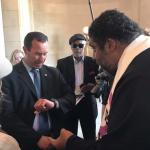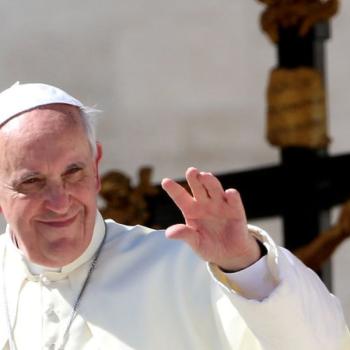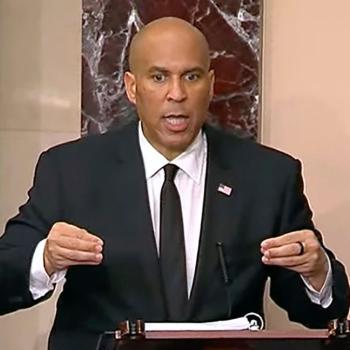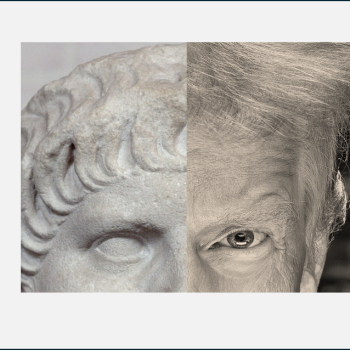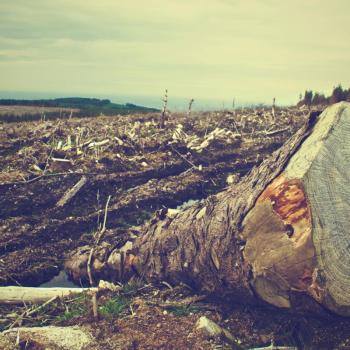“You wouldn’t believe how bad these people are. These aren’t people. These are animals.”
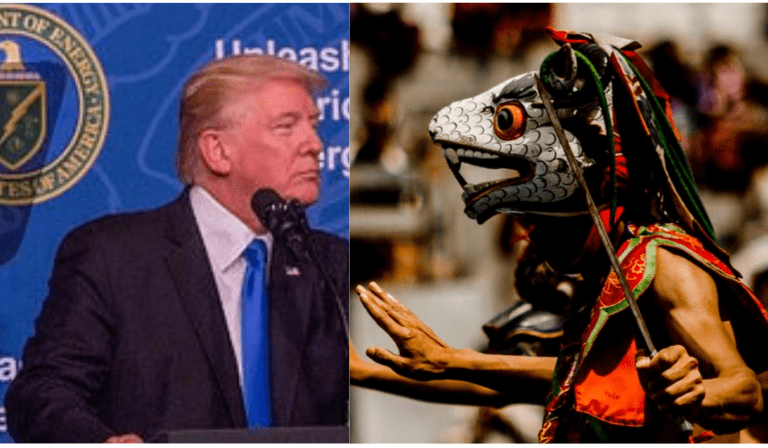
This is what Mr. Trump said in a White House meeting with local California leaders opposed to so-called “sanctuary city” policies. He was talking about immigrants from Latin America. Supposedly, he was referring only to gang members and those who commit violent crimes. However, given that he has a history of making blanket racist statements about other-than-white people, we have to take him at his word. [What he really meant, the context of his words, and why so many people are debating about it is explained in this excellent article on Vox: “Trump’s ‘animals’ remark and the ensuing controversy, explained.”]
So what’s wrong with calling people ‘animals’?
In one sense, it’s true. Because all human beings are, in fact, ‘animals.’ We are all mammals. That is a biological fact.
But Trump is working on a commonly held worldview wherein humans occupy the top of the moral pyramid, while animals lurk at the bottom.
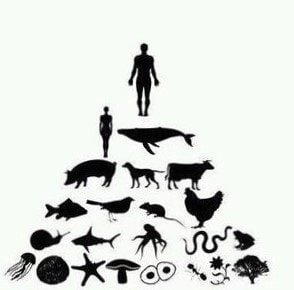
Actually, to be more precise, rich, white males occupy the top of the hierarchy, with females, then people of color, then animals beneath them.
It’s part of a pattern of seeing people who are unlike ourselves as beasts or monsters. Our language animalizes people, thus dehumanizing them. We call women “cows,” “bitches,” “cougars,” and “pussies.” White people have called black people “coons,” “apes,” and “dogs.” And did you know that it was a practice in medieval Europe to hang an ape and a dog on the gallows when a Jew was executed?[1]
See, if a person is not truly human, logic dictates that they can be brutalized and exterminated like any other nuisance or threatening beast.
But this logic is based on misconceptions, misdirection, and downright lies.
Philosopher Mary Midgley wrote a brilliant essay entitled “Animals and the Problem of Evil,” in which she deconstructed the logic by which we project our worst traits onto animals, and label problematic human behavior as ‘beastly.’[2]
“That view,” she explained, “has been built up on a supposed contrast between man and animals which was formed by seeing animals not as they were, but as projections of our own fears and desires,” (39). In other words, humans have been “mapped by reference to a landmark that is largely mythical,” (40).
Actually, the only animal that does the sort of wicked things Trump is concerned about is, well, Homo sapiens. In fact, humans show more savagery toward their own kind than most other mammal species.
Mr. Trump, it is, in fact, your own aggression toward members of your own species that accounts for such monstrous misrepresentation.
The inhumanity of which you are accusing others is your own, projected onto populations of what you believe to be throw-away people. What other animal deliberately plans to separate children from their parents as you propose, just because those families are immigrants fleeing poverty, violence, and oppression?
This is not to say that M-13 members do not commit heinous crimes. But they represent the smallest fraction of the immigrant population. In any case, dehumanizing those we fear does not lead to constructive solutions. We must find better ways to use our words. Calling people “animals” is wrong, dangerous, and reminiscent of authoritarian rhetoric used to rationalize exterminating entire populations of people.
As John Pavlovitz points out, Trump and his minions “are the people most existing at the periphery of decency right now.” He explains:
They are the ones pushing the limits of what human beings can do to other people and still claim Humanity. They are the ones justifying hospital room ICE raids and family deportations, the ones advocating for torture, the ones making coarse jokes about dying senators, the ones trafficking in anti-Semitic social media slurs and racist memes, the ones hounding teenage shooting survivors and demonizing gay kids.
The other problem with Trump’s animalization of humans is that it cuts both ways.
Certain animals are demonized. Wolves, sharks, and alligators, for example, are labeled as “ruthless killers.” They are, in turn, hunted, tortured, and killed for sport.
But, as Midgely points out, there is no such thing as an immoral “beast” in nature. Animals are “neither incarnations of wickedness, nor sets of basic needs, nor crude mechanical toys, nor idiot children. They are [animals], each with its own very complex nature,” (50).
Why, then, do humans insist on their morally superiority when they hunt just as wolves do?
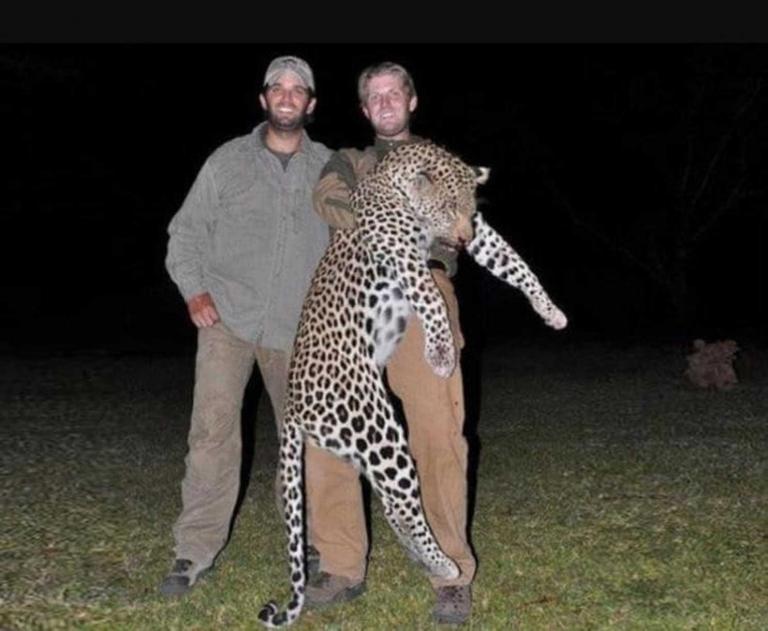
Humans may not have fangs and claws, but our intelligence has allowed us to develop weapons such as knives and guns to carry out the same functions. As Midgley notes, “We build more thoroughly and better than the bee and the beaver; thus, too, we kill more thoroughly,” (42).
But the reality is that humans have always been unwilling to admit their own ferocity, opting instead to “deflect attention from it by making animals out to be more ferocious than they are,” (43). We project our worst vices onto animals, and project our worst fears onto people we label as “animals.”
Thus, animals are categorized as evil. And people like Trump animalize other humans, thus continuing a trajectory that leads to a very dangerous place.
It hearkens back to whites in the 1600’s (and continuing to this day) labelling people in Africa as “savages” and “beasts.” This opened the way to treating them as such – animals to be owned, worked to death, beaten, raped, and killed for sport.
As Rachel Held Evans explained in a series of Tweets about the context in which the president said these words: “This kind of language has been used to justify the worst human rights abuses in history.”
The CONTEXT is the administration’s plan to separate immigrant children from loving & capable parents just to make a point, and to put those children in warehouses or “in foster care or whatever.”
The CONTEXT is a president consistently suggesting that most immigrants “are rapists” who “bring drugs and crime” to America when, statistically, immigrants are less likely to commit crimes than born-citizens….
The CONTEXT is the ugly, unyielding reality that this is how humanity’s worst moments begin: With lies, with fear, with dehumanization, with religious folks so high on power or drunk on apathy they look away as the image of God is violated in their fellow human beings.
In other words, Mr. Trump, your rhetoric about others belies your own worst traits.
Some may call your behavior “wolfish,” “predatory,” or “beastly.” But I won’t do that. Because I do not wish to insult animals by connecting them to your own wicked behavior.
Animals deserve better. And people deserve better, too.

Leah D. Schade is the Assistant Professor of Preaching and Worship at Lexington Theological Seminary (Kentucky) and author of the book Creation-Crisis Preaching: Ecology, Theology, and the Pulpit (Chalice Press, 2015). She is an ordained minister in the Lutheran Church (ELCA).
Twitter: @LeahSchade
Facebook: https://www.facebook.com/LeahDSchade/.
See also:
9 Reasons ‘Trumpy Bear’ is a Sham: The Cuddlefication of a Despot
‘In God We Trump’: Film Review
No, Mr. Pruitt, Fossil Fuels Are Not God’s ‘Blessing’ for Humanity
[1] Ramona and Desmond Morris, Men and Apes (London, 1966), p. 31.
[2] Mary Midgley, ”Animals and the Problem of Evil,” The Essential Mary Midgley, ed. David Midgley (New York: Routledge, 2005)



